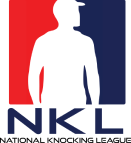Closing deals and making commissions might seem like something exclusively reserved for salespeople.
But, selling isn’t always about money.
But, the art of selling— pitching an idea, sealing a deal, or persuading a client — is a universal skill.
You might be looking to sell your skills in a job interview. Or convince your bosses to approve your ideas which is a whole other kind of selling.
Or maybe you’re just starting out in sales and don’t know where to begin.
In either case, the three key points we discuss here can help.
1-Know Your Audience
The first step to selling is knowing who you’re talking to. You need to know what your audience needs, wants, challenges and motivates them. This will help you adjust your message and offer to their specific situation and goals.
One way to know your audience is to ask questions that let them tell you their thoughts and feelings. For example, instead of asking, “Do you like our product?”, ask, “What are you looking for in a product like ours?” or “How do you think our product can help you solve your problem?”
Another way to know your audience is to listen carefully and kindly. This means paying attention to what they say, how they say it, and what they don’t say. It also means showing real interest and curiosity, repeating what you hear, and acknowledging their emotions. For example, instead of saying, “I see”, say, “That sounds frustrating,” or “That must be exciting”
Knowing your audience can build a good relationship, trust, and credibility with them. You can also discover their problems, goals, and concerns, which will help you address them later in the selling process.
2-Show Your Value
The next step to selling is showing how you or your product can help your audience achieve their desired outcome. You need to clearly and convincingly explain your value, using facts and stories that support your claims.
One way to show your value is to use the STAR method, which stands for:
- Situation: Describe a specific scenario or problem that your audience faces or faced in the past.
- Task: Explain what your audience wanted or needed to do in that situation.
- Action: Describe what you or your product did or can do to help them do that task.
- Result: Highlight the favorable outcome or benefit your audience experienced or can expect from your action.
For example, instead of saying, “Our product is fast, reliable, and easy to use”, you can say “One of our customers was struggling with slow and unreliable software that wasted their time and money.
They needed a solution to handle complex data and workflows without compromising speed and quality. That’s why they chose our product, designed to perform faster and more reliably than any other software in the market. As a result, they could save 30% on operational costs and increase their productivity by 50%.”
By showing your value using the STAR method, you can show your audience how you or your product can solve their problem and improve their situation. Using real examples and measurable results can make your message more memorable and persuasive.
3-Answer Objections
The final step to selling is answering any objections or worries your audience is going through, before arriving at a decision. You have to expect, accept, and overcome these objections confidently and respectfully.
One way to answer objections is to use the LAER model, which stands for:
- Listen: Let your audience say what they must say without interrupting or judging them. Try to understand the main reason for their objection and the emotion behind it.
- Acknowledge: Show that you appreciate their feedback and empathize with their point of view. Don’t argue or ignore their objection, but disagree.
- Explore: Ask questions that help you clarify their objection and discover any hidden issues or assumptions. For example, ask, “What makes you say that?” or “Can you tell me more about that?”
- Respond: Give a response that answers their objection logically and emotionally. Use facts, data, testimonials, or comparisons supporting your viewpoint. For example, say, “I understand your concern, but here’s what our research shows,” or “I see where you’re coming from, but here’s how our customers feel about it.”
Answering objections using the LAER model, can help you turn resistance into engagement and move your audience closer to a favourable decision. Its also worth mentioning that its one of the most important aspects of sales skills development which not only helps establish professionalism and credibility when you show that you’re respecting their opinions but demonstrates that you have done your homework.
Wrapping Up
Stepping into sales can feel like standing in front of a locked door, especially if you’re a newbie.
You might have the passion, the drive, and the determination, but without the right key, unlocking that door can appear challenging.
A bootcamp centred around sales skills development might be your answer.
For those new to the sales landscape, a sales bootcamp is more than just a training program; it’s your passport to the dynamic world of selling. It equips you with the tools, techniques, and confidence to not just enter but thrive in this competitive arena.
Now, while there are many bootcamps out there, the D2D Experts’ sales bootcamp stands out as the prime choice for those transitioning into sales. It’s specifically tailored for individuals eager to make their mark in sales. With a curriculum designed by industry veterans, hands-on training, and real-world scenarios, it ensures you’re not just prepared but primed for success.
Imagine the transformation – from a sales novice to someone who can confidently navigate the challenges and intricacies of the sales world, all thanks to the right training.
The D2D bootcamp is the key you’ve been searching for. Enrol today, unlock the door to the sales universe, and begin your sales skills development.
Your future in sales starts here!
























